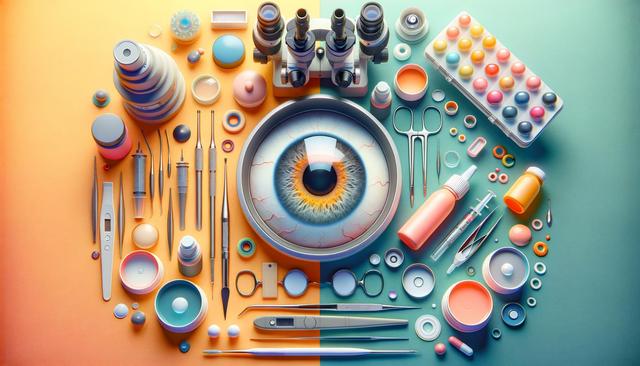
More People Are Considering Cataract Procedures
Understanding Cataract Surgery and Why It’s Gaining Popularity
Cataract surgery has become one of the most commonly performed procedures worldwide, especially among older adults looking to restore their vision. A cataract is a clouding of the eye’s natural lens, which can lead to blurry vision, difficulty seeing at night, and increased glare. As the global population ages and more people experience these symptoms, it’s no surprise that more people are considering cataract procedures to maintain their quality of life. Advances in surgical techniques and lens technology have also contributed to the growing interest in this procedure.
The surgery involves removing the clouded lens and replacing it with an artificial intraocular lens (IOL). Modern cataract surgery is typically performed on an outpatient basis and requires minimal recovery time. With a high rate of success and minimal complications, cataract surgery is an effective and safe way to regain sharp sight and reduce glare.
Who Should Consider Cataract Surgery?
Not everyone with cataracts needs surgery right away. However, when vision loss begins to interfere with everyday activities, such as reading, driving, or using digital devices, it may be time to explore surgical options. More people are considering cataract procedures earlier in the progression of the condition to preserve their independence and lifestyle.
Some common signs that cataract surgery may be beneficial include:
- Frequent changes in eyeglass or contact lens prescriptions
- Difficulty seeing in low light conditions
- Colors appearing dull or yellowed
- Increased sensitivity to light and glare
- Cloudy or blurred vision
Consulting with an eye care professional for a comprehensive eye exam can help determine if cataract surgery is the right step for you. Early diagnosis and intervention can lead to better outcomes and a smoother surgical experience.
Advancements in Cataract Surgery Technology
Modern cataract procedures have come a long way thanks to technological innovations. Today’s surgeries offer a high degree of precision and customization, allowing surgeons to tailor the procedure to each patient’s specific needs. One of the most significant advancements is the use of laser-assisted cataract surgery, which can improve accuracy and reduce the risk of complications.
Intraocular lenses have also evolved significantly. Patients can now choose from a variety of lens types, including:
- Monofocal lenses, which improve distance vision
- Multifocal lenses, offering both near and far vision correction
- Toric lenses, designed to correct astigmatism
- Light-adjustable lenses, which can be fine-tuned after surgery
Such options allow patients to achieve better visual outcomes and may reduce the dependence on glasses or contact lenses after surgery. This flexibility is one reason why more people are considering cataract procedures earlier than before.
Preparing for the Procedure
Preparing for cataract surgery involves a few important steps to ensure a smooth and successful experience. Your eye care provider will guide you through a pre-surgical assessment, which typically includes measuring your eye to determine the appropriate lens type and fit. You may also be advised to stop taking certain medications or use prescription eye drops to prevent infection prior to the procedure.
On the day of surgery, the procedure usually takes less than 30 minutes, and most patients return home the same day. Local anesthesia is commonly used, and patients remain awake but comfortable during the process. Post-surgery care is critical to recovery, and patients are usually provided with:
- Antibiotic and anti-inflammatory eye drops
- Protective eyewear to prevent accidental rubbing
- Instructions on activity limitations, such as avoiding heavy lifting
Following these instructions helps reduce the risk of complications and promotes optimal healing and vision improvement.
Recovery and Vision Improvement
Recovery from cataract surgery is generally quick, with many patients noticing improved vision within a few days. However, it may take several weeks for vision to fully stabilize. During this time, follow-up appointments are important to monitor healing and assess how well the new lens is functioning.
Most patients experience:
- Improved clarity and brightness of vision
- Reduced glare and halos, especially at night
- Enhanced ability to perform daily tasks without visual aids
For those who choose multifocal or toric lenses, the benefits may include greater freedom from glasses for both near and far tasks. It’s essential to follow your doctor’s guidance during recovery to ensure the best outcome. With the continued improvements in surgical techniques and lens options, it’s clear why more people are considering cataract procedures to enhance their vision and lifestyle.
Conclusion: A Clearer Future with Cataract Surgery
As awareness grows and technology advances, more people are considering cataract procedures not just as a medical necessity, but as a proactive step toward better quality of life. Whether you’re starting to notice signs of vision loss or already have a cataract diagnosis, discussing your options with a qualified eye care provider can help you make an informed decision. With the potential to regain sharp sight and reduce glare, cataract surgery offers a safe and effective way to achieve clearer, more comfortable vision.


